Within a week, people throughout America will be enthralled by a solar eclipse. This celestial event will force the world to slow down and gaze into the Heavens. As an inquiry-based teacher for over 25 years, I would have researched and provided insightful experiences on how to learn about anything for my kindergarten and first grade students. Perhaps you’d like to join me and my grandson in our preparation for this phenomenon instead.
DISCLAIMER: Please note that I’m a retired inquiry-based teacher and enthusiastic Gigi simply sharing what I’m learning. I’m not a professional scientist, a solar eclipse glass safety agent, or an expert on eclipses. I debated on whether to share this inquiry or not. But, as I searched for solar eclipse glasses and chatted with people in my community, it seemed clear. Even with my limited knowledge, I found myself teaching what I had learned with people who were interested. And they were grateful. So, I’ve decided to share my new eclipse knowledge with you.
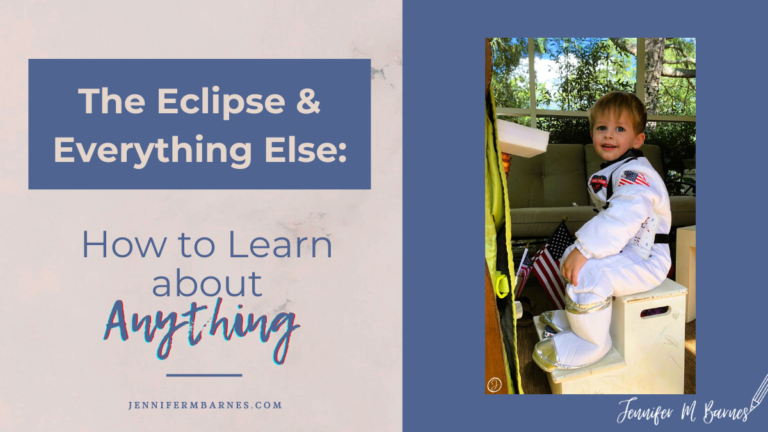
What Inquiry-Based Teaching Is All About
This inquiry with my grandson is what inquiry-based teaching is all about. My most powerful inquiries with students were topics on which I really didn’t know that much—architecture, quilts, and trains, for example. One of my son’s favorites was roller coasters. (Nothing like real-life experiences!) In the process of reading, experiencing, talking, listening, sketching, and sharing, we’re living an inquiry-based life.
Actually, you can take this same stance I’m sharing—and discover how to learn about anything you desire. Through your questions, conversations, research, gathering of tools, your experiences and reflection, you can learn about anything, too. I’m so glad you’ve come along as we inquire into solar eclipses!
RIGHT NOW: Find solar eclipse glasses.
Although these specially-made glasses were abundant—and free—in 2017, I just haven’t been able to get my hands on any. After checking the public library and several stores, we purchased ours online. Note the safety recommendations from NASA:
- ISO 12312-2 Compliant
- Made of black polymer or silvery mylar
- If you have old ones, do a few safety tests to ensure they’re not scratched.
Please supervise your child closely throughout the eclipse, ensuring they have kept their glasses on. Remind them to never look at the sun directly or they’d risk damaging their eyes permanently.
Determine your location on April 8th.
Review this video and this map from NASA to identify exactly where you plan to view the eclipse. Parts of fifteen states will have front-row seats to a total eclipse. If you’re blessed to live in the total eclipse area, your experience should be incredible. According to the experts: If there’s any way you could visit those areas, you should consider it. The differences between a total eclipse and a partial one are significant. However, check the recommendations, weather forecasts, and warnings for those areas as well. Because of crowds and the possibility of shortages (cell service, water, gas, and more), preparation is key.
Note: If you’re in the partial eclipse areas, you will still experience unique things.
Gather tools and materials (and ingredients for some out-of-this-world food!)
- Besides glasses, you may wish to make a pinhole projector. Here’s an easy demonstration from NASA with a “mini-show” so you can see how the projector actually works!
- Bring a kitchen colander—it’s a natural pinhole projector with multiple viewing possibilities. Consider setting up near a tree or a stand of trees to capture that effect. (However, you’ll need to see the full sky for the main event.)
- Look for reflective surfaces. (Think: doors, windows, ponds or lakes, or puddles.)
- And because my grandson and his momma love festive foods, you might want to create eclipse snacks, too.
Learn some basics about what's actually going on.
As an inquiry-based teacher, I followed the lead of children wanting to learn more about their passions and interests. We collected items, touched and sketched, and gathered books on everything from snow globes and Monster Trucks to high heels and fire alarms. We studied our passions up-close and personal. Isn’t that the best way for us all to learn?
Teaching far-off concepts to little kids can be tough. However, when celestial events occur or kids beg to study dinosaurs or airplanes, we must capitalize on the learning and make it accessible for children.
- Google the topics. Read,
- Go visit the library, museums, places with experts.
- Research available apps (like Totality, a free eclipse app).
- Observe. Ask questions and then try to answer them.
- Do.
Do you remember studying the different rotation patterns of the Earth, Moon, and Sun? My students used to love roleplaying those heavenly bodies. Through moving, they caught onto the patterns and realized what a solar eclipse was. Whether you act out the movements of the Earth, Moon, and Sun with family or find a simulation online, create experiences that matter.
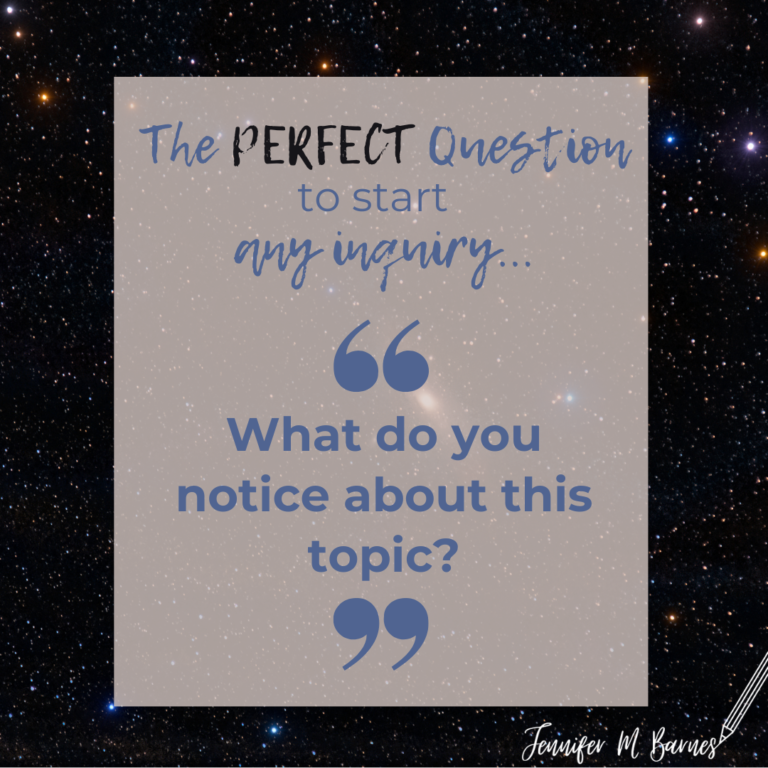
Begin with some observations right now.
1. Look up and LISTEN.
Whether it’s morning, afternoon, evening, or after bedtime😉—ask, “What do you notice?” Whether at a ballfield, in a car, or on the back porch, talk about whatever they bring up. Listen to their words.
2. Talk
After time for viewing and thinking, you might share:
- “That cloud you just mentioned—look how fast it’s moving! Did you know there’s different names of clouds?” You could perhaps introduce a new term. Or not.
- “I wonder where the moon is tonight. Did it disappear?”
- “I read there are 200 billion trillion stars. That number looks like a 2 with 23 zeroes following it!” Pair the power of this Bible verse with that statistic:
“He counts the number of the stars; He calls them all by their names.” -Psalm 147:4 (Amplified Bible)
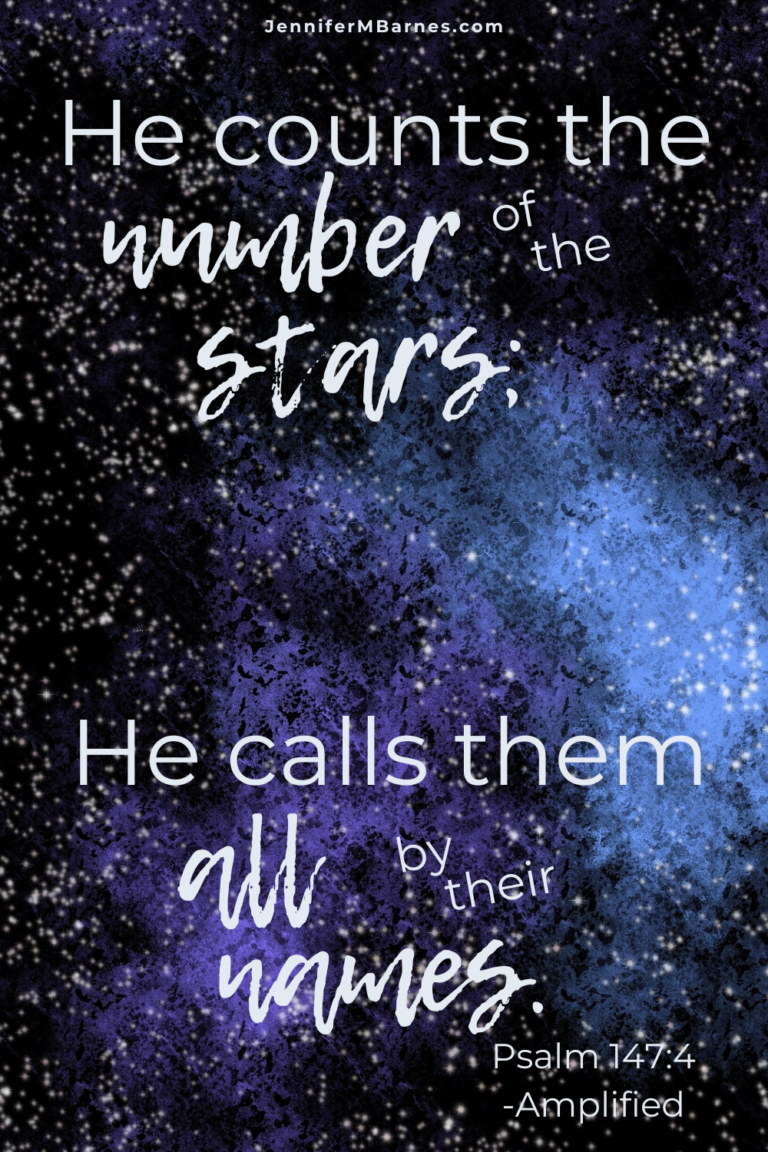
On the Eclipse Day itself, variations on movements of birds, animals, and temperature will occur. These days before the eclipse are the perfect time to highlight typical movements during daylight.
Whatever conversation points you share, your child will probably bring them back up later. They might repeat that new Bible verse, remember that scientific term, or discover the moon during the daytime. Shared conversations are wonderful for introducing learning, but they also build stronger connections between you.
3. Consider the value of sketching & writing in journal or sketchpads.
When my first graders studied “Things in the Night Sky,” our most significant assignment was viewing the sky every single night for a month. Children were asked simply to sketch what they saw and jot a few words. They also documented the date, time, weather, and location. On cloudy nights, some wrote, “There’s not much to see.” How about this great entry where young Trevor tried to solve the mystery? Often, kids recorded “fun facts” for their parents from their burgeoning knowledge.
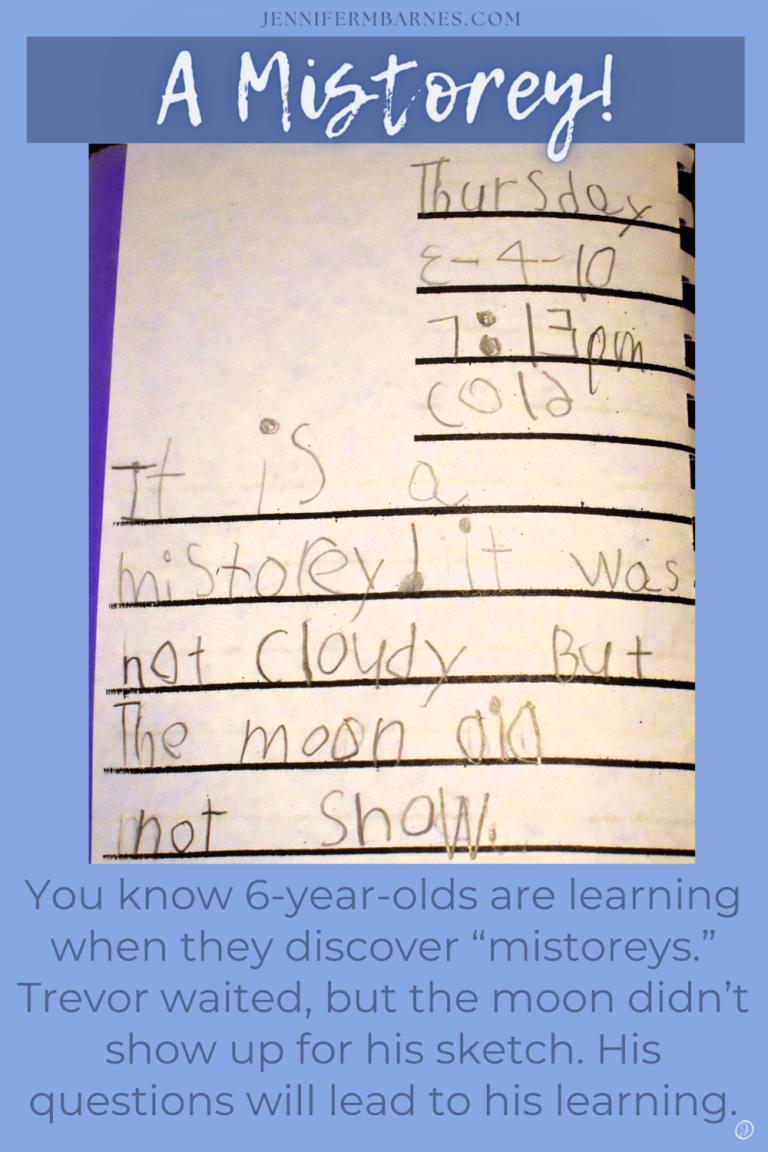
Although time-consuming and sometimes tough to accomplish, completing those Moon Logs was an important lesson in perseverance and consistency. Several parents later said they treasured star-gazing memories and learning with their children. Several former students told me they still look at the night sky and smile, remembering their moon logs and sharing them at school.
Note: We always made time for kids to quickly showcase their Moon Logs. When children share their thoughts, it’s amazing how quickly they begin seeing each other as learning partners! Their play outside often reflects this new learning relationship. Whether your child is working with a group at school or simply hanging with grandparents, they begin seeing that their important thoughts contribute to real learning of others. Individual insights become integral parts of everyone’s learning. How better to remember the work each evening—than knowing that your friends anticipate seeing your next illustration, hearing your ideas, and learning things from you?
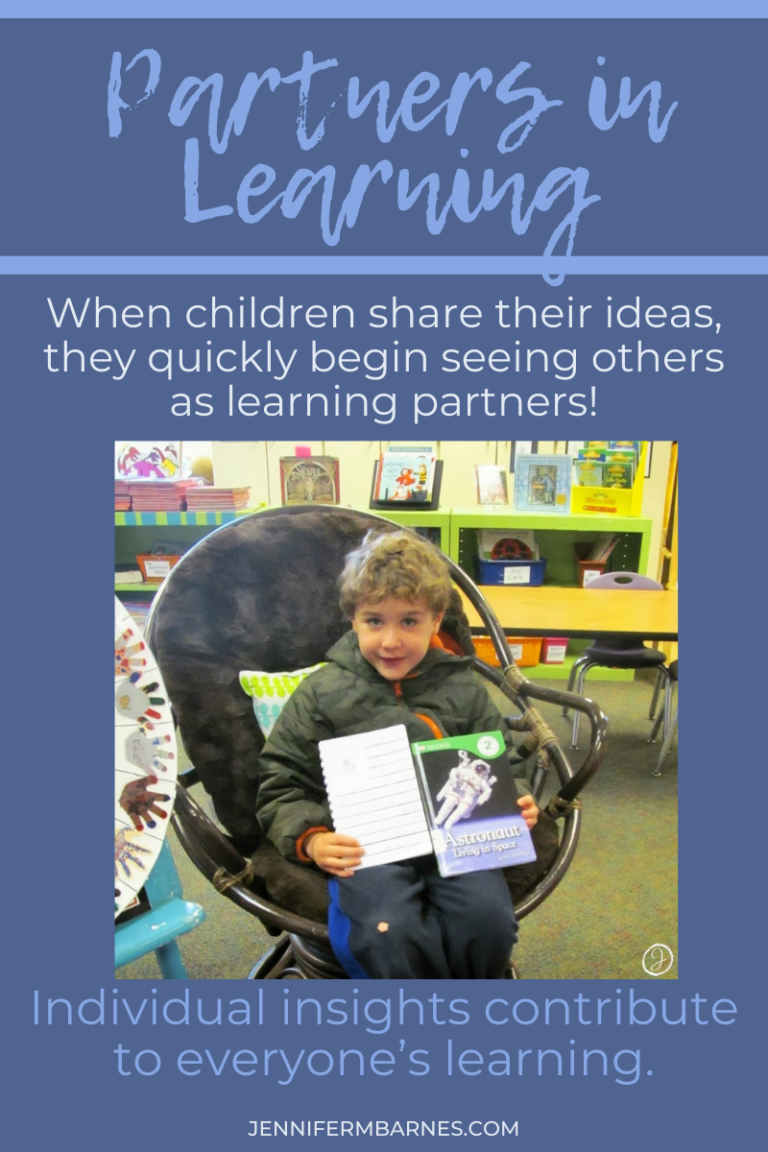
If you’re learning as a family, bedtime reading and prayers present the perfect opportunity for children to reflect on new things they’ve learned. While seeing such beauty, we find ourselves amazed and marvel at God’s beautiful world. These moments of awestruck wonder remind children of how special they are and how much God made each one unique.
4. Make some hands-on projects.
Each day, I discover interesting projects on Pinterest. Since I taught in an inquiry-based school for many years, I look for meaningful projects where children help solve their problems and misconceptions as well as deepen understandings. I also appreciate hands-on experiments where children can thoughtfully engage with materials. Hopefully you’ll find these more authentic, inquiry-type of projects in my collection there.
Over the years, I’ve seen simulations use flashlights to show how different percentages of the eclipse are shown. Others use items as simple as paper plates and brads to demonstrate the movements. Perhaps some of these will inspire you. As I discover more, I’ll add them there.
5. Participate in citizen science experiments.
Remember the conversations you shared with your child, listening for bird and animal noises? This citizen science experiment asks families to gather information about the sounds of the eclipse for several days prior and on the eclipse day itself. Check out Eclipse Soundscapes if you’d like to participate.
ON THE BIG DAY (Partial Eclipse Viewers):
Please note that the time of the eclipse is approximately 4½ minutes. (This time is almost 2 minutes longer than viewing time during the 2017 eclipse. The moon was at its furthest distance then. For this April eclipse, our Earth is closer to the sun. The moon will be at its closest distance and will appear larger.) On the time frame for my state, we have approximately 2½ hours from the beginning stages of the eclipse to the end. The maximum effect comprises those 4½ minutes.
Also note: the next possible date to see a total eclipse in our country is 20 years from now in 2044. (My grandson will be 24. Perhaps he’ll plan the next eclipse party for me!)
Safety First: First and foremost, emphasize the importance of eclipse safety and wearing of the special glasses throughout the whole partial eclipse.
*There is no safe time during a partial eclipse when viewers can take off their safety glasses. *There is a short period of time during a total eclipse where viewers can take off their glasses to view the sun, hoping to see the different possibilities.
Take Notice of:
Temperature & Sky Changes
As the eclipse gets closer, cloud patterns change. The darkening sky takes on more gray colors. Things around you might appear hazy or blurry. The temperature drops. Some people have described it as “eerie” or “gloomy.” Bright stars or planets (like Venus) might shine.
Bird and Animal Behavior
Pay attention to the sound of crickets and cicadas. As temperatures drop, darkness rolls in, and stars come out, you should be able to hear changes in the insects. Typical nocturnal behaviors will happen. Cicadas will begin their evening calls and crickets will fade in. Bats might even come out. Diurnal animals might stop their daytime routines. As the eclipse effects begin returning to normal, the crickets and cicada noises will fall back out. You’ll probably be able to notice similar effects in our pets’ behavior.
Shadow Changes of Shapes, Sizes, & Sharpness
While waiting for the eclipse to happen, encourage your child to play with shadows using nature items, things you’ve brought, even their bodies. The size and shape of shadows will change throughout the eclipse. Shadows will become “sharper” and more directional, perhaps appearing pointy with edges. Why? Since the moon is blocking the sun, only a little light reaches the earth.
Sunspots
During the eclipse, you may be able to discern darker spots on the sun which are signs of the Sun’s magnetic energy.
Crescents everywhere
- Use your Pinhole Projector.
- Look on surrounding trees to see many repeated crescents circling tree trunks.
- Check those reflective surfaces (windows, doors, pools, lakes, puddles).
Plan to snap a few photos of the surrounding area to review later.
ON THE BIG DAY (Total Eclipse Viewers):
If you’re in the areas for total eclipse, you’ll definitely want to study more about these:
Baily’s Beads—An “arc of bright spots” (Brittanica) seen as the Moon makes its final move over the sun (NASA). Baily’s Beads disappear quickly to show the “Diamond Ring.”
The Diamond Ring—At a certain point, the sun and moon formation literally looks like a glistening, giant diamond ring.
The Corona—Totality hits and the Corona of the sun shows up. Because of the surrounding darkness, it emits a glorious glow.
Possibility of Sunspots—Since the Sun is in an active phase right now, you might see sunspots, flares or loops of activity (resembling streamers.) If conditions are right, you might see a thin circle of pink, the chromosphere.
Shadow Bands—Wavy lines and ripples of shadows and lights can sometimes be seen on the ground both before and after the eclipse.
Solar Eclipse Special Snacks
Although I didn’t often teach with food (due to children’s allergies and concern about time requirements during school days), I admit to finding joy in festive foods with family. (Follow the links to see pictures and directions to create them.)
Interested in no-bake eclipse cookies using Ritz crackers, pretzel sticks, candy melts, and peanut butter that look like darling little suns with rays?
Galaxy Cookies (made of sugar cookies) are decorated with layers of black, royal blue, pink, and white icing.
Galaxy Popcorn is mixed with black, royal blue, and lavender candy melts with star-studded sprinkles and edible glitter.
Crescent sandwiches: Just load crescent-shaped croissants with your child’s favorite sandwich fillings.
Use star, moon, and sun cookie cutters to cut cheese slices into shapes. Place on crackers.
Want more? How about sunflower seeds, Sun chips, Sunmaid raisins, Moon pies, donut holes (mini-moons), Mars or Milky Way candy bars? Drinks could be Capri Suns, Sunny Delight, Sunkist Soda, or some swirly galaxy punches. Thanks to this post, there’s more!
At the beginning of my research into solar eclipses, I honestly could not find as many resources. Obviously, things are changing as the days click down to the official date. Look at the most recent special eclipse food that showed up in my research… Krispy Kreme!
Krispy Kreme’s “Out of This World” Doughnuts are only available April 5th – 8th (while supplies last.) Not every store is participating. If you’re interested, click here.
Other Great Resources:
Ready, Set, Eclipse! – Designed2Glow My friend, Cindy Lynn Sawyer, wrote an amazing blog post for families and kids to learn more about the eclipse. She gives substantive information, lots of resources, learning opportunities, and snacks. Enjoy this topic from her angle.
Eclipse | NASA Space Place – NASA Science for Kids A Safe Kids’ Place to Learn about Eclipses
What’s Up: April 2024 Skywatching Tips from NASA Starting at 1:38, you’ll get some great information for the eclipse as well.
The 2024 Total Solar Eclipse : A Once in a Lifetime (youtube.com) The 9-minute video explaining why this eclipse will be more spectacular than usual—and the science behind it.
Learning new things as a family or class brings people together. May the delight in discovery energize you as you embark on your next learning adventure into anything you wish!
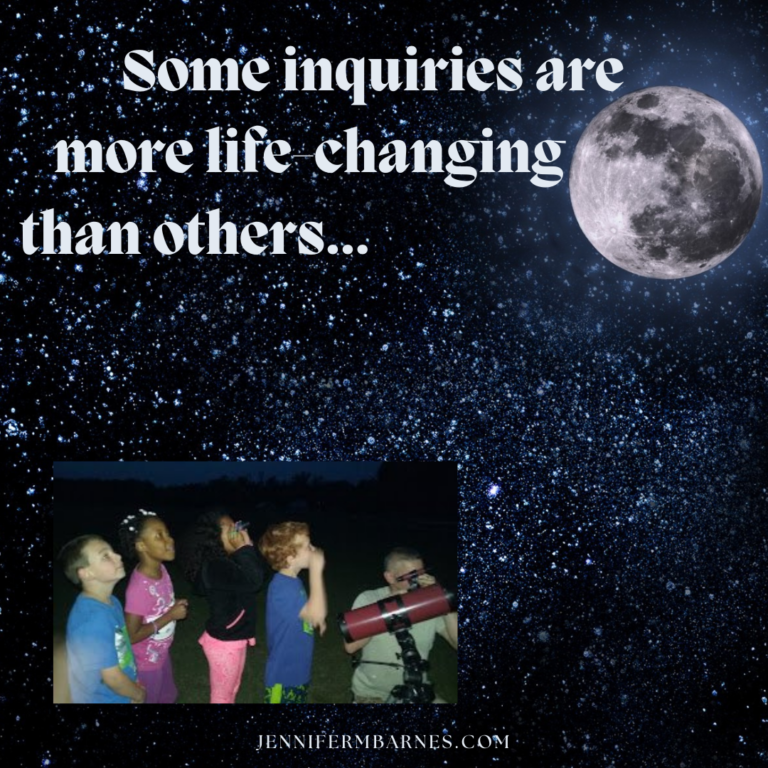


Wow, Jennifer! This is amazing content. So much to learn, think about, and share! Thank you!
Love this! Even though I don’t have any littles around, I loved learning about fun activities and plan to try a few myself!
So much good information! Thanks for passing this on!